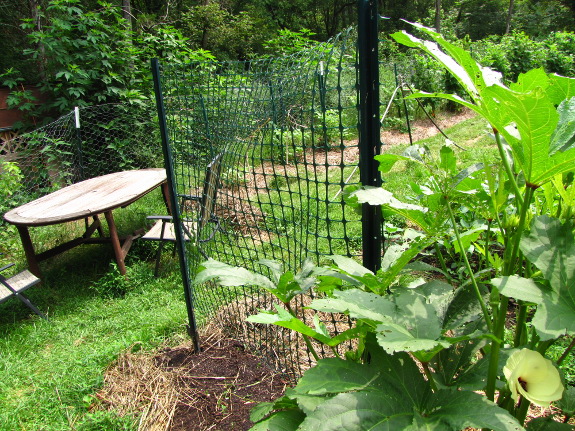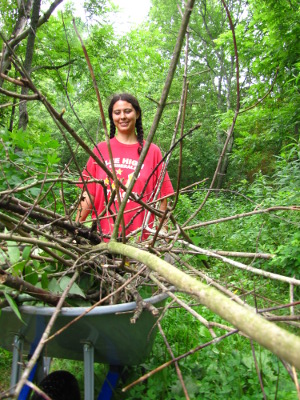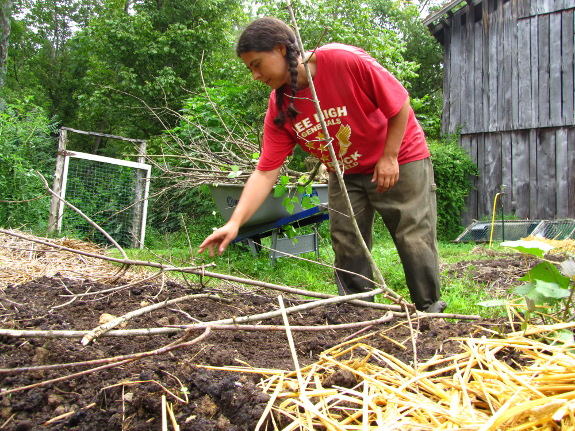
How to prevent pet damage in the garden

What do you do if your pets
are scratching up your newly sprouted seedlings? Here are the
best options I've come up with:
- Put up a trellis. If you're going to need one anyway (such as for your fall peas), go ahead and erect your trellis as soon as you put the crops in the ground. A determined cat might still play in the bare soil, but you'll at least keep the dogs out.
 Leave most of the mulch in place.
If you're planting large crops like peas or transplanting seedlings
like broccoli, you can just rake back mulch from small patches of
earth. It's the bare soil that your pets find so attractive, so
mulch
will prevent damage.
Leave most of the mulch in place.
If you're planting large crops like peas or transplanting seedlings
like broccoli, you can just rake back mulch from small patches of
earth. It's the bare soil that your pets find so attractive, so
mulch
will prevent damage.- Stack small sticks on the bed. Just a few well-branched sticks will keep both cats and dogs at bay. Layer the branches in overlapping patterns so that the whole bed is very lightly covered, but not using so many that you block light to the soil. Once your crops are big enough that they would get tangled in the wood, your pets will no longer be interested, so you can move the sticks away (or use them as kindling.)

These tips assume
that your pets are actually interested in the beds in question.
If they're instead running through your plantings on their way to
somewhere else, you need to learn about nodes and natural
pathways. (See the June
volume of Weekend Homesteader for more information.)
Another way of keeping
your pets on the aisles and out of your crops is to figure out why
they're messing up your beds. (No, the answer probably isn't to
raise your blood pressure.) I'm pretty sure our cats dug up the
carrots and broccoli because they thought the loose soil made a good
litter box. Maybe the permaculture solution would be to build
them a sand pit so they could scratch with impunity?
Want more in-depth information? Browse through our books.
Or explore more posts by date or by subject.
About us: Anna Hess and Mark Hamilton spent over a decade living self-sufficiently in the mountains of Virginia before moving north to start over from scratch in the foothills of Ohio. They've experimented with permaculture, no-till gardening, trailersteading, home-based microbusinesses and much more, writing about their adventures in both blogs and books.
Want to be notified when new comments are posted on this page? Click on the RSS button after you add a comment to subscribe to the comment feed, or simply check the box beside "email replies to me" while writing your comment.

I had problems with the dogs getting into my raised bed to lay in the straw mulch early this spring, the dead branch trick did great!
One of these days I'll remember to snap a photo of my Egyptian onions, they took well and are about 1-2ft tall already! The 100 degree heat hasn't phased them a bit.
So glad to hear your onions are doing well!
I've noticed that in cold weather, mulch is the animal's favorite, then in hot weather they want bare soil. Luckily, the branch trick works for both, as long as you pay attention close enough to know which beds to protect.